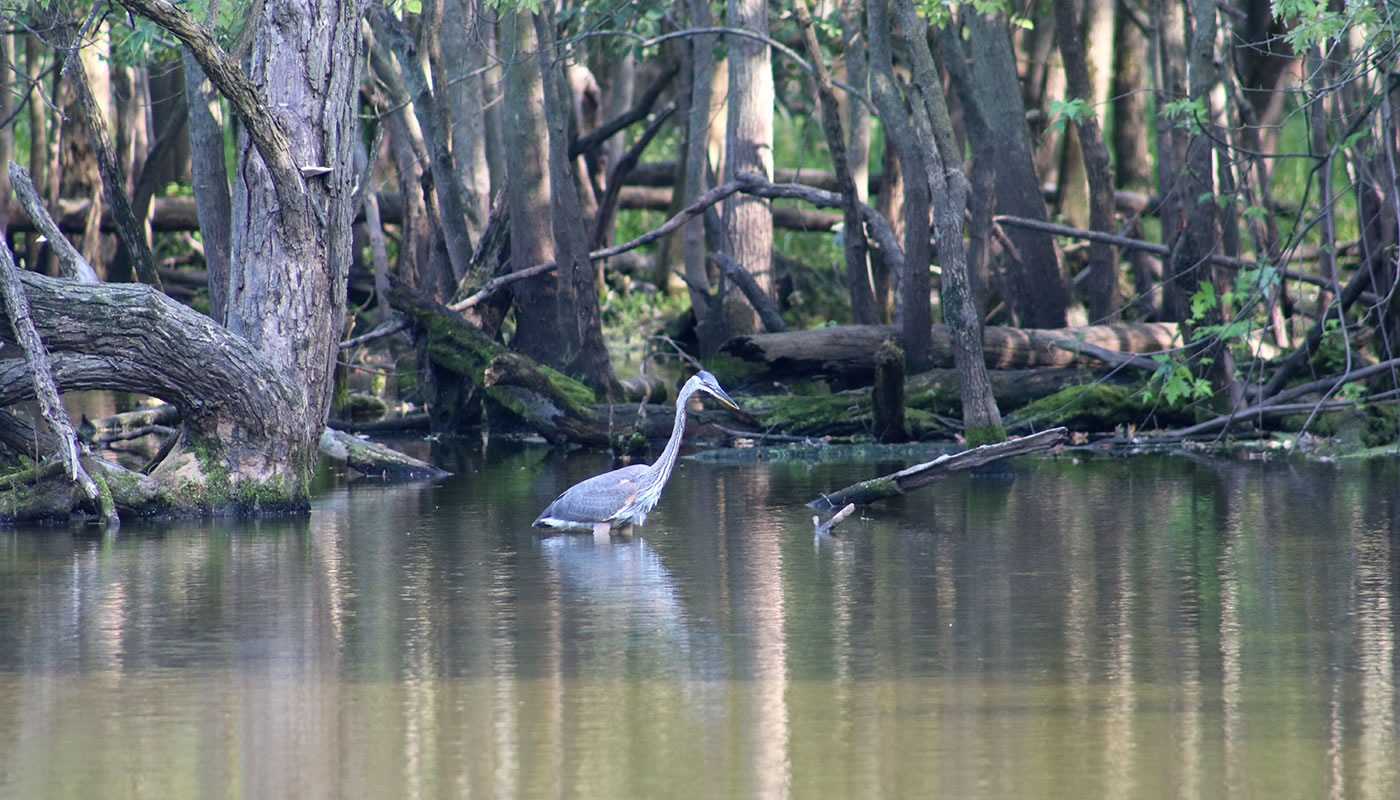Every spring and fall a natural wonder of wildlife migration takes place quietly overhead in the dark, unseen by most people. Millions of small colorful songbirds and interesting birds of all shapes and sizes wing their way between Canada or the northern United States and countries further south, from Mexico through the Caribbean and Central America. Some fly all the way to the tip of South America. At daybreak these birds passing overhead will land and find themselves in our neighborhoods and preserves. They are hungry and exhausted, and are looking for trees, shrubs and plants to provide them with insects and berries to refuel, as well as shelter for resting before they resume their long-distance journeys.
This year, we celebrate the centennial of the signing of a foundational treaty that recognizes the international commitment to protect and conserve these birds who make their homes in multiple countries and journey twice a year through others. The United States signed the first Migratory Bird Treaty with Great Britain (on behalf of Canada) on August 16, 1916. In 1918, the United States passed the Migratory Bird Treaty Act, the law that formally implements the United States’ commitment to the 1916 treaty and three subsequent international treaties, with Mexico (1936), Japan (1972) and Russia (1976) for the conservation of migratory birds.
One hundred years ago, the pressures these migratory birds faced were different than today. Today, habitat loss due to urban development, agriculture and other human activities is the main threat to migrating birds. Birds are sensitive to environmental contaminants and can provide early warning of oncoming environmental issues, like in the 1960’s when DDT was thought to be a safe pesticide. Rachel Carson’s book, “Silent Spring,” warned that DDT was causing birds to lay eggs with shells so thin and brittle they often cracked before they could hatch. After the effects of DDT on birds were seen and understood, its use was banned.
Healthy migratory bird populations are good for nature. Many plant species depend on birds for pollination and seed dispersal. Birds are also good for food production—they eat around 98 percent of certain insect pests and can reduce the need for toxic pesticides.
As we celebrate past successes in bird conservation under these migratory bird treaties, we also look to addressing today’s threats. Key actions you can take to help birds are:
- Learn how to make your windows more safe for birds. Every year, at least 100,000,000 birds are killed across North America from collisions with windows.
- Keep cats indoors. Cats are responsible for an estimated one billion bird deaths a year.
- Plant native gardens that provide food and shelter for birds.
- Avoid spraying pesticides in your yard.
- Consider buying shade-grown coffee. Shade-grown coffee, as opposed to sun-grown coffee, tends to support more bird species and require fewer pesticides and fertilizers.
- Get to know our migratory birds on a #BirdThePreserves field trip this fall.
To learn more, click here for a video on migratory bird conservation history or visit the U.S. Fish & Wildlife website.
By Louise Clemency, field supervisor for the U.S. Fish & Wildlife Service’s Chicago Ecological Services Office.

